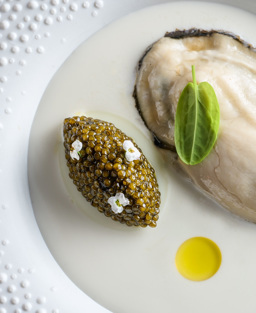

Around the world in nine cult sandwiches
From a geisha favourite in Japan to a fiery island breakfast staple, these stellar sarnies are the best thing since sliced bread, says Ina Yulo Stuve
01/04/2025
Sandwiches have been having a moment over the past decade. Once limited to children’s lunch boxes or as a grab-and-go option from a petrol station, they’ve now secured a spot on Michelin-starred menus and queues-around-the-block pop-ups, including social media sensation Sandwich Sandwich, which has just announced a new 3,500sqft site in London, officially making it the UK’s largest sandwich shop.
Jeremy Lee, chef-proprietor of Quo Vadis in London’s Soho and creator of the capital’s famous smoked eel sandwich (born from a hangover and a spontaneous fridge raid) believes the age-old practice of breaking bread together has played a key role in shaping sandwich culture. “I love the simplicity of taking bread and applying lashings of butter or oil and a few delicious things like ham and mustard,” he says. “It’s simple to prepare, lovely to eat and has a sort of timeless quality.”
Author and food editor David Paw credits factors such as the pandemic, a challenging economy and viral internet culture for turning the humble sandwich into the culinary phenomenon it is today. In his new book, Cult Sandwiches, Paw highlights different variations from across the globe, exploring their origin stories and the journeys they took to achieve fandom. Here are nine tasty sandwiches from Paw’s book that are worth travelling for.
Fried seafood po’boy, New Orleans
Ingredients: French bread, grilled or fried seafood, mayonnaise, finely shredded lettuce, pickles
Nothing screams ‘Gulf Coast’ quite like excellent seafood – and at iconic New Orleans restaurant Domilise’s, the salty, briny flavours of fried oysters and grilled shrimp are teamed with mayo, pickles and shredded lettuce, messily assembled into some French bread to create Louisiana’s beloved po’boy (a shortened version of ‘poor boy’). The sandwich was first recognised in 1929 during a streetcar strike in the city, when a duo of former streetcar conductors-cum-restaurateurs handed out the hefty sandwich to striking workers. Despite the no-frills environment, a steady stream of regulars come through the nondescript door to chow down on the family-owned Domilise’s filled-to-the-brim po’boys and enjoy some old-fashioned Creole hospitality.
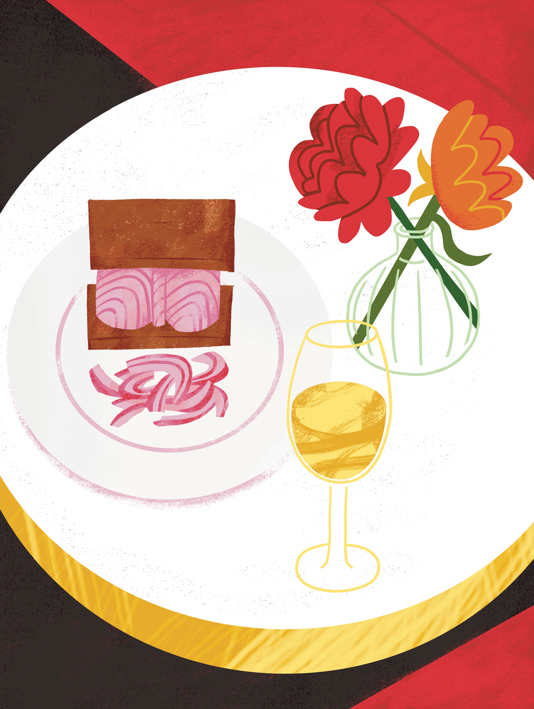

Smoked eel sandwich, London
Ingredients: toasted sourdough bread, smoked eel, horseradish cream, pickled onions
The humble sandwich’s foray on to the menus of white-table-clothed institutions is impeccably showcased by culinary icon Jeremy Lee’s smoked eel sandwich at Soho restaurant and private members club Quo Vadis. QV, as the cool kids call it, has been serving up seasonal British food since the roaring 1920s and has welcomed its share of colourful characters through its doors, especially during its past lives as a brothel and a residence for Karl Marx. In Lee’s signature dish, toasted sourdough from the artisanal Poilâne bakery is filled with slivers of savoury smoked eel, sweet pickled onions and a punchy horseradish cream. The seemingly simple dish delivers on both comfort and elegance, seamlessly fitting into its plush surroundings.
Wilensky’s Special, Montreal
Ingredients: Kaiser roll, beef salami, beef bologna, yellow mustard
Situated on a corner in Montreal’s old Jewish quarter, Wilensky’s is a kosher-style family-run deli where time has seemingly stood still. Original owner Moe Wilensky first started his operation in 1932 as a cigar shop with snacks. In the wake of changing consumer behaviours after the Great Depression, Moe came up with the Wilensky’s Special – a satisfying yet affordable light lunch option featuring beef salami and beef bologna from his deli counter. ‘No substitutions. No changes’ reads the sign as you go through the doors. True to tradition, every sandwich is prepared the same way – a lightly grilled Kaiser roll is smeared with yellow mustard before the deli meats are added in – just how Moe liked it.
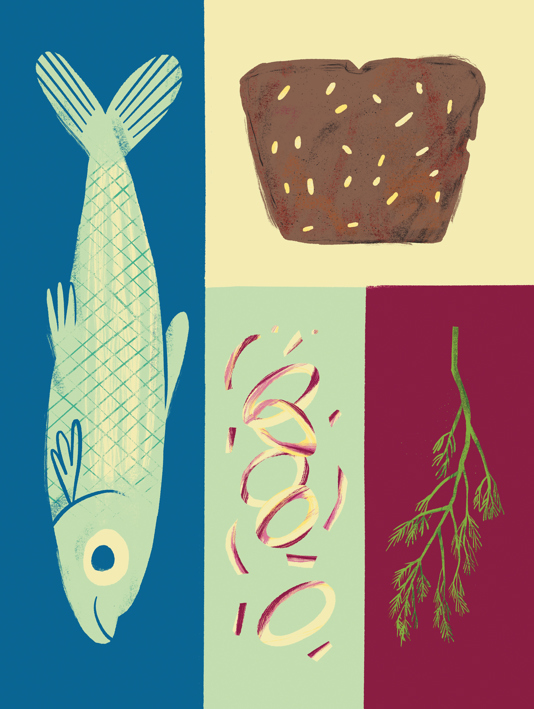
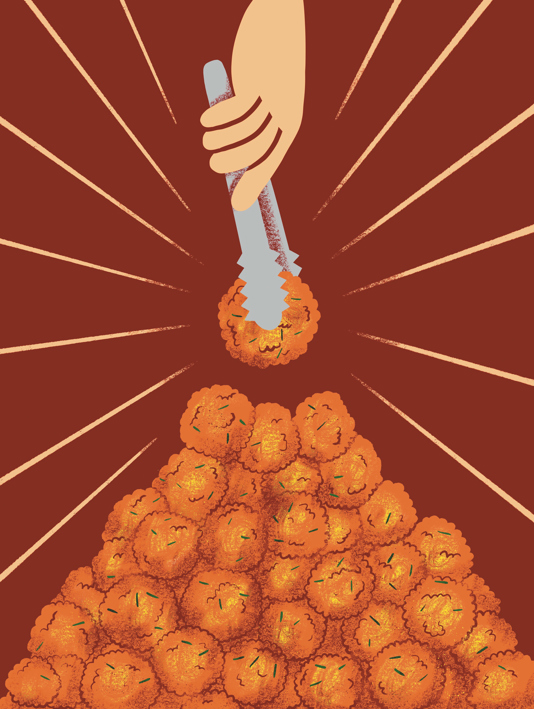
Smørrebrød, Denmark
Ingredients: dark rye bread, butter, varied toppings such as pickled herring, liver pâté, cured meats, cheese, eggs and fresh herbs
Smørrebrød literally means ‘butter bread’ in Danish and refers to the typical open-faced sandwich found all over Scandinavia. What started off as a traditional farmer’s lunch – where the day’s leftovers, including pickled herring and cured meats, would be piled on top of dark rye bread – is now also found with seasonal trappings such as an autumnal liver pâté paired with foraged mushrooms at establishments such as smørrebrød legend Ida Davidsen’s eponymous Copenhagen restaurant. This Danish staple can be as simple or as elaborate as you’d like – toss in whatever’s in the fridge or jazz it up with sauces and garnishes to achieve your perfect level of hygge.
Gateaux Piments, Mauritius
Ingredients: bread roll, split-pea fritters, chilli, turmeric, cumin, coriander, curry leaves
Mauritian cuisine is a lip-smacking union of flavours inspired by the different cultures that call the island home. A local favourite, spicy fritters called gateaux piments perfectly encapsulate this diverse culinary heritage. Indian, African, French and Chinese immigrants fused their traditional recipes with local ingredients creating a unique cuisine that is distinctly Mauritian. In the case of gateaux piments, round patties are formed from ground split peas and a tantalising mix of garlic, coriander, turmeric, curry leaves, green chillies and spring onions. After deep-frying until golden, the patties are stuffed into a buttered white roll and enjoyed with hot tea for breakfast.
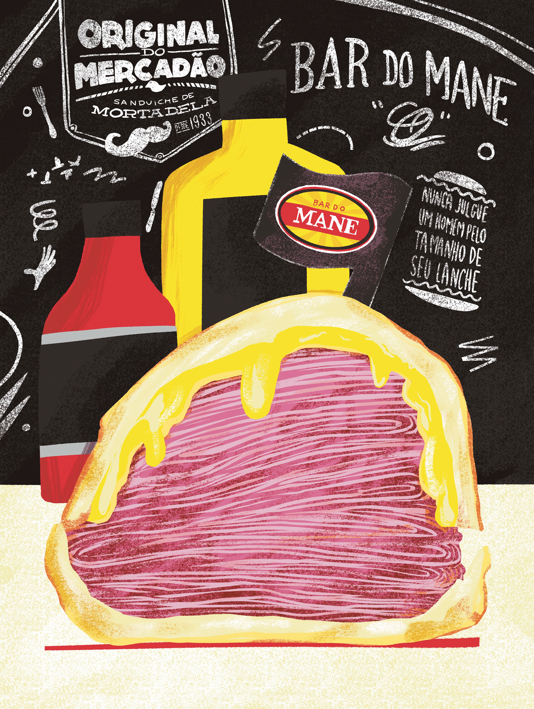
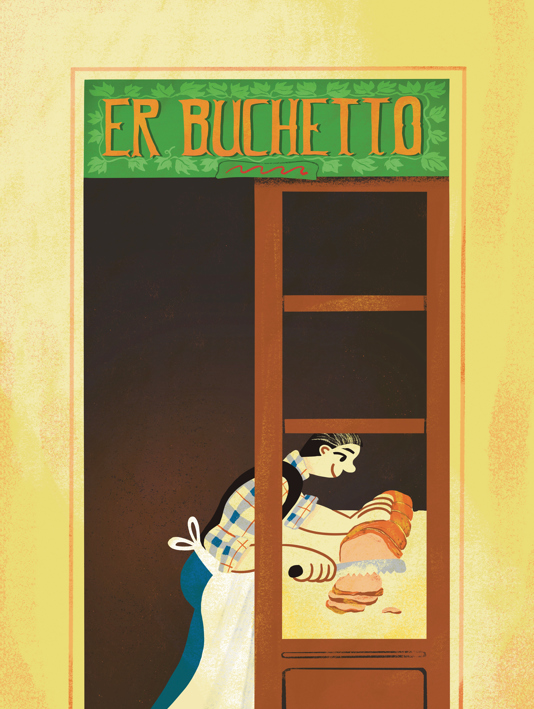
Mortadella sandwich, São Paulo
Ingredients: Portuguese water roll, mortadella, provolone
Deep in São Paulo’s bustling Mercado Municipal lies Bar do Mané, a popular market stall that churns out one of the city’s most popular dishes. The mortadella sandwich is a nod to Brazil’s large Italian population – around 31 million residents have Italian ancestry – and is a behemoth of a dish: layers upon layers of flavourful griddled mortadella are piled into a Portuguese water roll before silky provolone cheese is added on top, melting as it encases the cured meat. With about 300g of mortadella, it’s sure to satisfy even the most voracious of appetites.
Panino con porchetta, Rome
Ingredients: white roll, porchetta
Rome has no shortage of delicious food but, when you notice everyone from tourists to shopkeepers walking around clutching the same sandwich, you know it’s a dish worth trying. Despite its central location near Termini station, it’s easy to walk right past Er Buchetto, the famous food stall that’s been cooking up delicious, crackly panino con porchetta since 1890. Fifth-generation owner Alessandro Fioravanti gets his porchetta from a neighbouring village known for preparing some of the country’s best pork. The tender meat is rolled into a cylinder before it’s slow-roasted to perfection and infused with garlic and herbs such as fennel, rosemary and sage. The result? A crusty white bread sandwich packed with slices of deliciously juicy pork and a touch of that magical, salty crackling – the perfect treat for any Roman holiday.
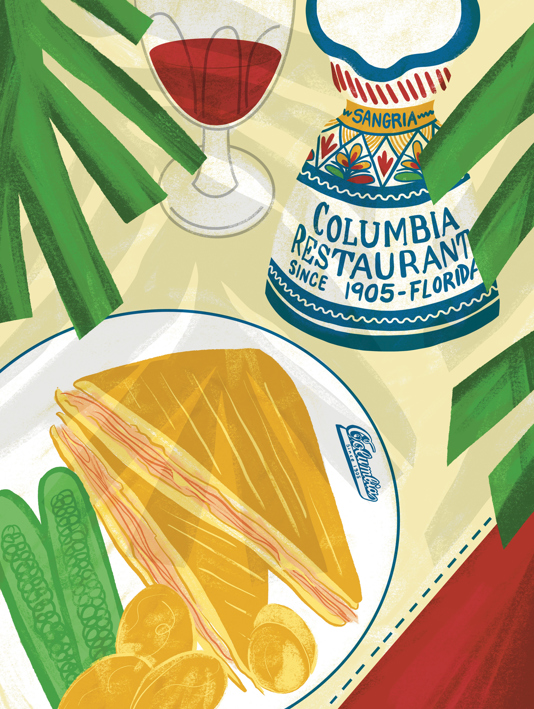

Cuban Sandwich, Florida
Ingredients: crusty white Cuban bread, ham, mojo roast pork, Swiss cheese, pickles, yellow mustard
You wouldn’t be the first to assume that the famous Cuban sandwich originated from the Caribbean isle rather than the kitchens of South Florida. But when Cuban refugees started arriving in cities such as Miami, Tampa and Key West after the 1959 revolution, they took with them their love for all things pork. In the case of The Cuban, slices of ham are joined by Swiss cheese, yellow mustard, pickles and beautifully roasted pork that’s been brined in a mojo marinade of bitter orange juice and herbs. Loaded into baguette-like Cuban bread, this crunchy pressed sandwich is best experienced at Florida’s oldest restaurant, Columbia, in Tampa.
Katsu sando, Japan
Ingredients: shokupan, pork or chicken katsu, shredded cabbage, Bulldog tonkatsu sauce, Kewpie mayonnaise
Perhaps no sandwich has quite gained a level of virality or international adoption as the katsu sando. While you’ll find many versions of it around the world, from fine dining restaurants to hipster pop-ups, the sensational sando saw its beginnings in early 20th-century Japan. The East Asian nation was undergoing a period of restoration and, influenced by the French côtelette de veau (veal cutlet), the katsu sando was born. A mouthwatering pork cutlet is covered in panko breadcrumbs and fried to a crisp. A tangy, sweet tonkotsu sauce and drizzle of creamy kewpie mayo on top help to cut through the fat. Soaking up all the juices are two slices of shokupan, aka Japanese milk bread, traditionally served with the crusts removed – a practice made popular by a Tokyo tonkatsu shop that wanted to help its geisha patrons avoid ruining their lipstick.
Extracted from Cult Sandwiches by David Paw (£16.99, Welbeck)


